Academy of Fine Arts alum Santtu Laine in residence: Reflecting on the ecology of doing and not doing
The ongoing ecological crisis has made many of us reflect upon our personal impact on the environment. From my perspective, this reflection has also concerned my artistic practice and the evaluation of its environmental impact. The ecological unsustainability of my earlier works has made me feel guilty for my actions. At times, this feeling of guilt has been so intense that it has paralysed me, making me unable to carry on with my artistic practice. To remedy the situation, I have started a process where I investigate and learn about sustainable ways of making art. The residency programme organised by the Saastamoinen Foundation and the Academy of Fine Arts of Uniarts Helsinki, Ecologies in the Making: Sculpting Futures, has provided me with an excellent opportunity toengage in a careful examination of this topic and to learn new things.
My artistic practice is multidisciplinary in nature. I employ the methods of sculpture in my practice, and many of my works are spatial installations that include moving image and audio elements. I started out my residency period by investigating different processes and working with materials that I was not familiar with. The underlying idea was that when making art you should strive for sustainability and ecological practices. In my own practice, this is evident in my desire to work with methods and materials that allow me to minimise the unwanted environmental effects of my working process.
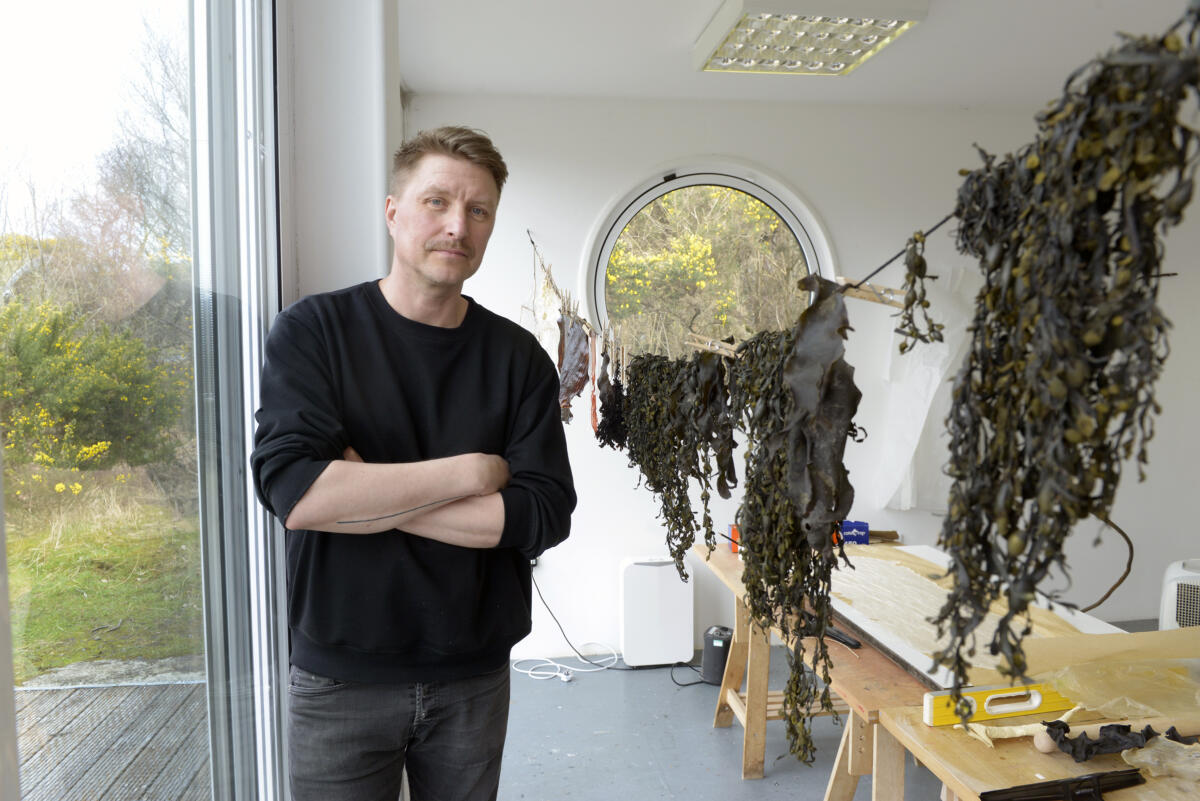
During the residency period, I studied biodegradable and nontoxic materials that had been produced with ecological sustainability in mind. In my work, I focused on bioplastics made of seaweed and examined ways in which I could use them in my artistic practice. The residency also gave me an opportunity to practice and reflect on sustainability in another context: the social ecosystem of an artist with a family. Working in the residency provided me with new perspectives into how I can connect family life and art making in a sustainable way.
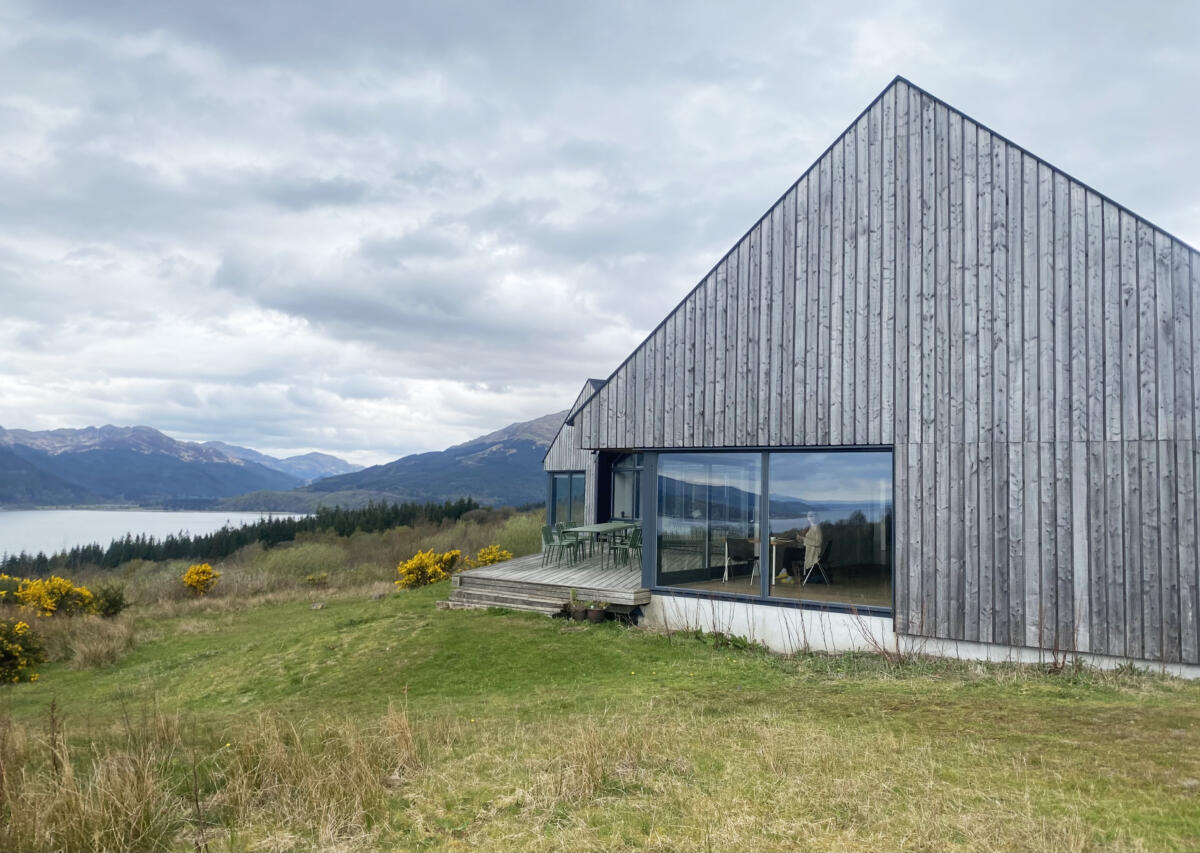
The first part of the residency took place at Cove Park residency centre on the west coast of Scotland. Surrounded by clean nature and rolling hills, Cove Park is located on the Rosneath Peninsula about an hour’s train ride from Glasgow. This isolated location provides excellent opportunities for engaging in work that requires great focus, such as writing or research. In Cove Park, every artist is given a personal studio with running water, a work desk, and breathtaking views. All my tools and working materials were already in the bag when leaving Finland. The staff at Cove Park were extremely professional and friendly, and they did their best to meet all our needs.
The second part of the residency took me to the rural village of Lumsden in Aberdeenshire, northern Scotland, where Scottish Sculpture Workshop (SSW) is located. While Cove Park was the perfect place for quiet and focused work, SSW was abuzz with activity. As its name implies, the residency centre at SSW is truly a workshop, and it includes metal and woodwork workshops, dedicated spaces and tools for working with stone, as well as a brand new ceramics workshop that opened only recently. Just like in Cove Park, SSW has regular staff to support the artists’ work, and expert technicians provide professional training for working in the workshops and using the machinery. The artists have unrestricted access to the machinery and equipment, and every artist is in charge of their own work. The atmosphere at SSW is relaxed and cosy. The feeling of cosiness is further increased by a Finnish sauna in the yard of SSW; sitting in the comfort of the sauna makes you forget that you were home-sick in the first place.
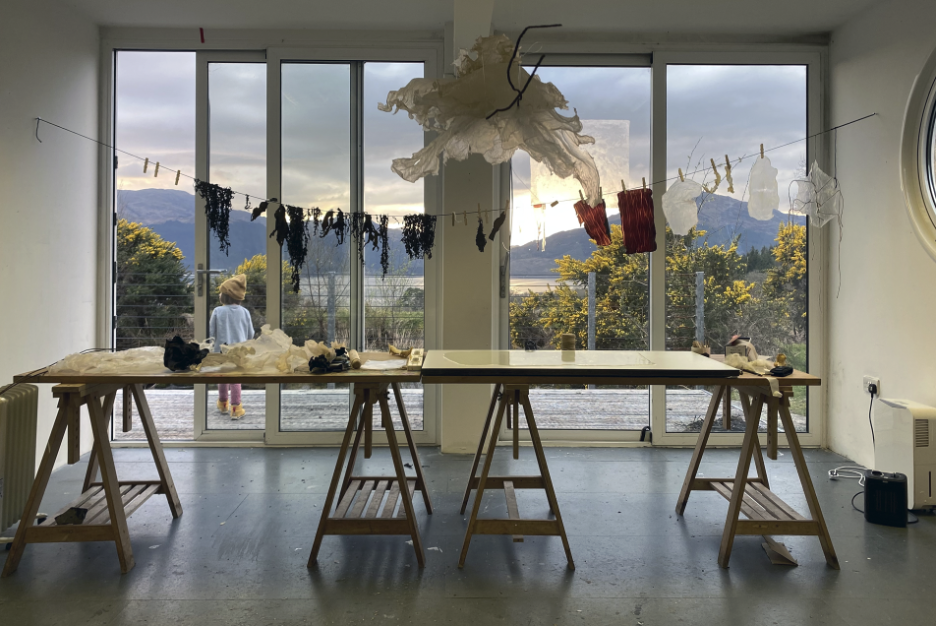
I spent the first month in the residency on my own. This gave me plenty of time to get to know my surroundings before the rest of the family arrived. I was able to prepare my studio and organise my working routines to the point where it was easy for me to continue working even when our four-year-old joined me in the studio. However, it turned out to be much more challenging to get day-care organised and to make my own working schedule fit with all the practicalities, such as transportation and mealtimes. Indeed, if you embark on a residency period with your family, it would be a good idea to work out all the practicalities well before the start of the residency period. Both Cove Park and SSW provided invaluable help in sorting things out.
Trials, errors, and successes
Before the residency period started, I had decided that my goal would be to create an ecologically sustainable material palette, which I could later use in my artistic practice. During the first couple of months of the residency, I performed nearly one hundred tests with new materials. I tried different solutions, casting techniques, and moulds. I was looking for ways to control and shape bioplastics made of seaweed. But no matter how much I worked the material, it always seemed to go back towards its original shape. Later I realised that there is no need to strive for absolute control. This sparked an idea of memory hidden within the material and the role of the artist as someone who interprets this memory. This idea became a central theme in my work. The deeper I delved into my research, the more important the process and the philosophy of working with my own hands became.
As a result of my research, I acquired new knowledge of seaweed. I gained a deeper appreciation of the role of seaweed both in a historical context and as an important part of the global ecosystem. Just like their related species on the ground, the underwater seaweed forests around the world are endangered. However, there is also good news: at the end of 2018, the Scottish Parliament forbade the mechanical, unsustainable harvesting of seaweed. Harvesting seaweed by aggressively dredging it from the seabed is comparable to clearcut logging in forests. It is possible to farm and collect seaweed in a way that respects the environment. Nevertheless, we need to pay more attention to protective measures and education in the future.
—
From the perspective of investigating a new, ecologically sustainable material, I was able to surpass the goals I had set for the residency. The working process also resulted in the creation of a new installation entitled Even The Seven Seas. In this work, I try to form connections between the memory hidden within the material, the human, and the underwater nature. The installation consists of sculptures made of bioplastics and a spatial audio work. The installation is also political: it draws attention to the problems related to the unsustainable exploitation of the underwater forests.
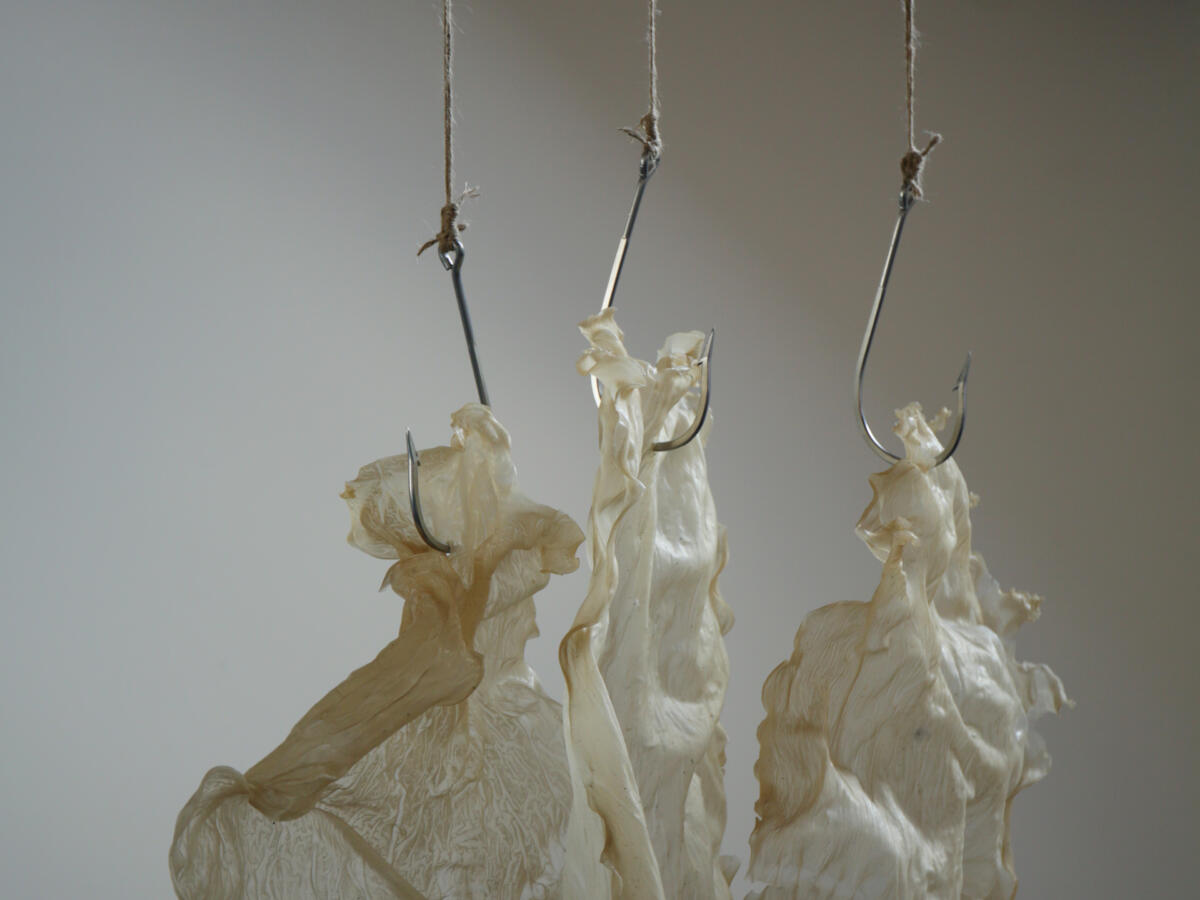
The residency period in Scotland showed me that it is possible to make art in a sustainable way. Engaging in ecologically sustainable art making is ultimately a balancing act between doing and not doing. The most ecological alternative would obviously be to not do anything. However, for a creative person, this seems like a utopia, which means that you should focus on minimising the harmful effects of your work. The bioplastics made of seaweed are reusable and biodegradable. If my work ends in failure or does not appeal to me for some reason, I can always reuse the material. The seaweed mass also can be composted along with the rest of your biowaste. Furthermore, working with nontoxic materials makes it possible for you to take your kids to the studio and let them take part in the art making process.
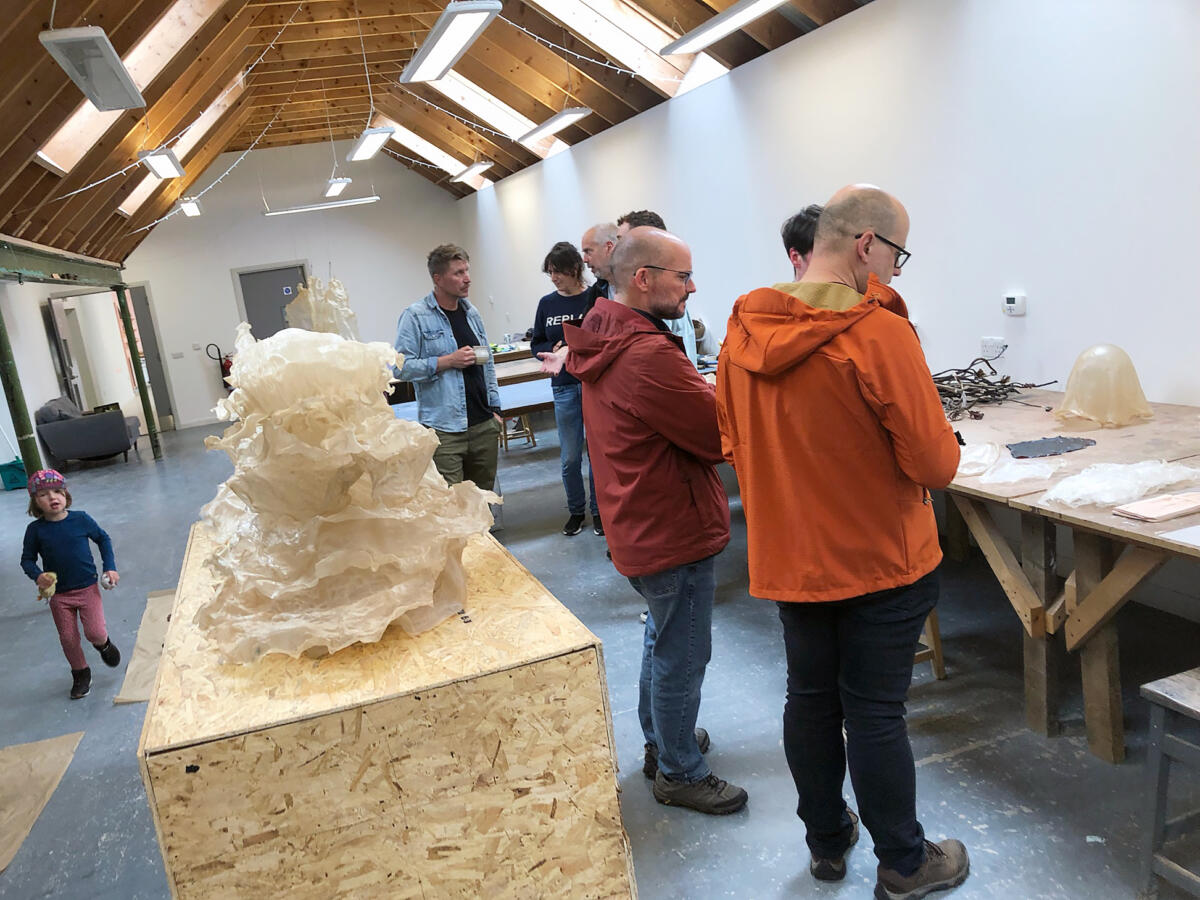
The best thing about the residency was the time it gave me to focus on my work, the countless meetings with the other artists, and the friendships established during the residency period. I will never forget the spectacular nature of Scotland and all the friendly people I met. I wish to go back some day.
I would like to offer my sincere thanks to everyone at Cove Park and Scottish Sculpture Workshop for making our visit to Scotland unforgettable! Special thanks go to Alexia Holt, Sam Trotman, Alexis, Olive & Sol, and Sade Kahra. I also wish to thank the Saastamoinen Foundation and the Academy of Fine Arts for the generous funding of the residency and for providing me with this unique opportunity.
Taideyliopiston alumniblogi
Alumnimme ovat äänessä tässä blogissa ja tuovat uusia tuulahduksia taiteen työkentiltä.
Uusimmat julkaisut
-
Lotta Hurnanen, selected for the LIFT residency, intertwines analogue film and gardening
-
Anna Karima Wane, selected for the Jan van Eyck Academie residency, builds community through art
-
Academy of Fine Arts Alum Kaija Hinkula at ISCP Residence in New York 2025: A Sense of Place
Seuraa blogia